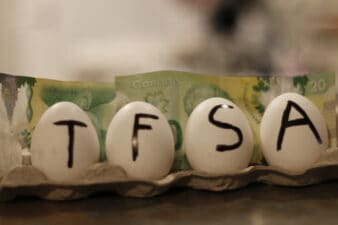If you want to retire in good shape, an RRSP is a must-have.
Giving you a tax break along with the ability to grow your investments tax free, it can offer considerable tax savings.
Although TFSAs let you grow and withdraw your investments tax-free, they don’t offer the tax deduction you get with an RRSP. Additionally, TFSA contribution limits are typically low, making them less than ideal for the truly dedicated retirement saver.
Unless you have an employer-sponsored pension or are willing to look into alternative plans like IPPs and PPPs, an RRSP is an absolute necessity. However, there is one RRSP mistake that you must avoid at all costs if you want to maximize your retirement benefits.
Withdrawing before you retire
Withdrawing funds from your RRSP before you retire is generally extremely costly.
The reason is that RRSP funds are taxed at either your marginal tax rate or a withholding tax rate — whichever is higher — and if you’re earning a decent income, your marginal tax rate is probably fairly high.
The federal income tax rate on earnings over $62,000 is 29%, and there are provincial taxes tacked on to that as well. In a high-tax province like Quebec, you can find yourself topping 40% without even earning six figures.
If you withdraw funds from your RRSP while still working, then you can end up paying quite a bit of tax on the withdrawals. In light of this, what should you do?
What to do
It would be easy enough to say that, to avoid unexpected RRSP taxes, you shouldn’t withdraw early. However, it’s not always that easy. After all, nobody sets up an RRSP intending to withdraw before retirement. Usually, early withdrawal happens when something comes up at the last minute — a financial emergency, for example.
So, the real question is, what should you do to prepare for financial emergencies that may lead to early RRSP withdrawal?
One answer is to distribute your savings across several tax-free accounts, including ones with more flexible withdrawal rules than RRSPs.
A TFSA can be a great option here. Like an RRSP, a TFSA lets investments grow tax-free. Unlike an RRSP, however, it lets you withdraw whenever you want with no tax penalty. So, if instead of putting all your retirement savings in an RRSP, you put some in an RRSP and some in a TFSA, you’d have a portion of your savings that could be deployed in a financial emergency.
Example
Consider an investor holding Fortis (TSX:FTS)(NYSE:FTS) in both an RRSP and a TFSA.
Like anybody else holding FTS in an RRSP, the investor would likely benefit from reasonable capital gains, as well as high and increasing dividend income. Those benefits come from the built-in qualities of the company, like its recession-ready revenue sources, and its impeccable decades-long track record of dividend increases.
However, putting part of the position in a TFSA would give an extra benefit: the ability to withdraw dividends and use them for financial emergencies (or any other type of spending).
A $100,000 position in Fortis yields about $3,500 a year in dividends. Held in a TFSA, you could withdraw all of those dividends tax free. That’s not the case in an RRSP. If you’re still working and have a marginal tax rate of 40%, you’d pay a $1,400 tax on that same $3,500. That’s a big difference. Of course, you need your RRSP for the income tax break and larger contributions. But by putting part of your portfolio into a TFSA, you give yourself the flexibility to withdraw funds without a hefty tax bill.








